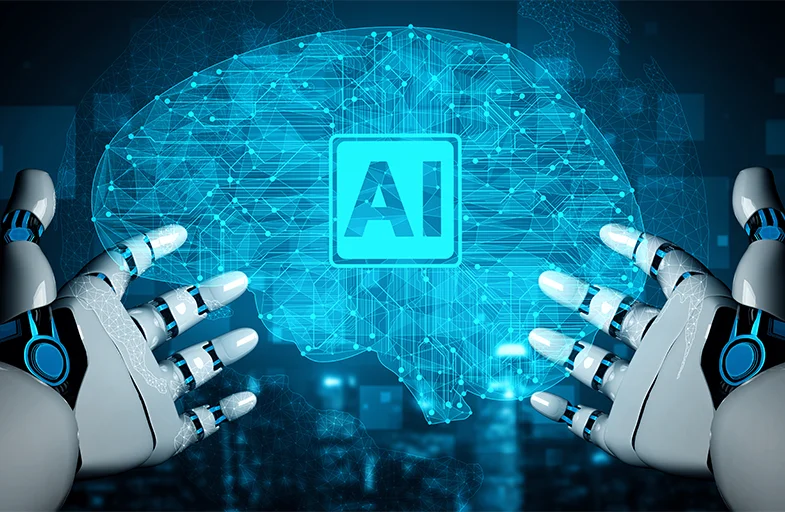Imagine a world where technology doesn’t just compute but thinks, adapts, and learns just like the human brain. Sounds futuristic? Welcome to the realm of neuromorphic computing.
Picture entering a smart café that adjusts its lighting to your mood, customizes the menu based on your preferences, and where the AI-powered barista remembers your coffee order—even the exact temperature you like. That’s the magic of neuromorphic computing: intuitive machines that go beyond commands to understand context and emotion.
Unlike traditional computing, which relies on sequential, rule-based processing, neuromorphic computing is inspired by the neural architecture of the human brain. It uses advanced chips and algorithms to replicate how neurons interact, making machines smarter, faster, and far more energy-efficient.
This groundbreaking approach to AI doesn’t just improve systems—it humanizes them, injecting artificial intelligence with a spark of organic cognition.
Curious about how it all works? Let’s dive into the science behind neuromorphic computing and why it’s set to revolutionize the future.
What Is Neuromorphic Computing?
Neuromorphic computing represents a revolutionary shift in how computers operate. Traditional systems follow a rigid, step-by-step instruction set. In contrast, neuromorphic models use a network of artificial neurons and synapses that communicate via electrical impulses, mimicking biological brains.
These brain-like systems learn from their environments, adapt on the fly, and run with incredible energy efficiency. That’s why they’re perfect for powering the next generation of real-time, intelligent AI applications.
How Does Neuromorphic Computing Work?
The brilliance of the human brain lies in its ability to process massive amounts of data, adapt instantly, and consume minimal energy. Neuromorphic computing emulates this functionality through three core components:
- Spiking Neural Networks (SNNs): These networks process data using spikes or pulses, only firing when stimulated—much like neurons in the brain. This event-driven mechanism reduces computational load and boosts responsiveness.
- Neuromorphic Chips: Special processors like Intel’s Loihi or IBM’s TrueNorth are built to simulate millions of interconnected neurons and synapses, offering near-biological efficiency.
- Event-Driven Processing: Unlike conventional systems that are always running, neuromorphic systems respond only when needed, drastically cutting energy use.
Together, these innovations power a new kind of intelligence—one that learns and adapts like a living brain.
Benefits of Neuromorphic Computing
Why does this brain-inspired technology matter? Because it transforms how AI systems behave and perform.
- Energy Efficiency: The human brain handles trillions of tasks using just 20 watts of power. Neuromorphic systems emulate this, making AI applications significantly more power-efficient than traditional models.
- Parallel Processing: Neuromorphic systems handle tasks simultaneously, much like our brains. This enables faster decision-making—ideal for real-time applications such as autonomous vehicles and robotics.
- Self-Learning Capabilities: These chips don’t need constant reprogramming. They adapt to new inputs on their own, improving with every interaction—just like a human gaining experience.
Real-World Applications of Neuromorphic Computing
Neuromorphic computing is already making waves across industries. Here’s where its potential is truly being realized:
- Artificial Intelligence (AI) & Machine Learning (ML): Enhances AI capabilities by making models more adaptive and efficient. Think AI assistants that understand emotional cues or respond in a human-like manner.
- Robotics: Neuromorphic chips allow robots to process sensory data in real-time and react instantly—crucial for autonomous robots and prosthetics.
- Edge Computing & IoT: With low power needs and high responsiveness, neuromorphic processors are perfect for smart devices, from home assistants to surveillance systems.
- Healthcare: Powers advanced brain-computer interfaces, enabling direct communication between the brain and external devices. This could transform neuroprosthetics and the treatment of neurological disorders.
- Cybersecurity: Their ability to detect anomalies quickly mimics how our brain senses danger. Neuromorphic systems can identify and neutralize threats more efficiently than conventional methods.
Challenges in Neuromorphic Computing
Despite its advantages, neuromorphic computing comes with some hurdles:
- Hardware Complexity: Designing chips that mimic the brain’s intricate network is a major engineering challenge, limiting scalability and adoption.
- Software Compatibility: Current AI software is built for traditional hardware. Neuromorphic systems require entirely new algorithms and programming models to function optimally.
- High Initial Costs: Developing custom chips and supporting systems involves substantial R&D and production costs, making it a costly investment initially.
- Environmental Concerns: While energy-efficient in operation, producing specialized chips involves rare materials and complex manufacturing, contributing to environmental impact and e-waste.
The Future of Neuromorphic Computing
While still in its early days, the future of neuromorphic computing looks incredibly bright. Tech giants like Intel, IBM, and Qualcomm are already investing heavily in next-gen chips that promise higher performance and broader applications.
As AI moves toward more intuitive, human-like functionality, neuromorphic systems are expected to lead the charge, bridging the gap between artificial logic and biological intuition.
With continuous research and innovation, this emerging field could reshape how we interact with technology—making devices more empathetic, responsive, and efficient.
Final Thoughts
Neuromorphic computing is more than a technological innovation—it’s a leap toward a future where machines not only compute but truly understand. Inspired by the brain, these systems offer the promise of AI that learns, adapts, and evolves with us.
While there are challenges to overcome, the potential is too transformative to ignore. As neuromorphic hardware becomes more accessible, we may soon live in a world where devices don’t just respond—they relate.
One day, your laptop might not just remind you of your password—it might sense your frustration and gently nudge you with a hint, because it finally understands… You’re only human.


























